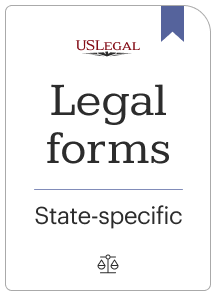

This form is a release of liability. The releasor forever discharges and acquits the releasee of all damages and injuries resulting from the event described in the document. California Release of Liability — General: Understanding the Basics The California Release of Liability, commonly known as a liability waiver, is a legal document designed to protect individuals or entities from potential legal claims resulting from certain activities or events. It serves as a written agreement between two or more parties, where one party voluntarily relinquishes their right to sue or hold another party responsible for any injuries or damages incurred during specific activities. This release of liability form is widely used across various industries and sectors throughout California to minimize liability risks and protect businesses, organizations, or even individuals conducting potentially risky activities. It is important to note that a general release of liability is different from specific releases of liability used for certain activities like sports, transportation, or medical treatments. There are different types of California Release of Liability — General, each tailored to specific situations and activities. Let's explore a few of them: 1. Personal Event Release of Liability: This type is commonly used for private events, such as weddings, birthday parties, or family gatherings. It ensures that the host or organizer is not held responsible in case of accidents, injuries, or property damage during the event. Relevant keywords: California personal event release of liability, private event liability waiver, party liability waiver. 2. Rental Property Release of Liability: Property owners, landlords, or property management companies often require tenants or guests to sign this release of liability form to protect themselves from potential legal claims resulting from accidents, injuries, or damages that may occur on the rental property. Relevant keywords: Rental property release of liability, California tenant liability waiver, property rental agreement waivers. 3. Recreational Activity Release of Liability: This type of release is commonly used by businesses or organizations offering recreational activities, such as sports, adventure tourism, or fitness classes. It aims to mitigate the risk of legal claims from participants who may get injured or encounter accidents during the activity. Relevant keywords: California recreational activity release of liability, sports liability waiver, adventure tourism liability waiver. 4. Volunteer Release of Liability: Non-profit organizations or community programs often require volunteers to sign this form to safeguard themselves from potential legal action in case of accidents, injuries, or damages incurred while volunteering. Relevant keywords: California volunteer release of liability, community service liability waiver, nonprofit organization waivers. It is important to consult a qualified attorney to ensure the specific release of liability form aligns with the intended purpose and provides adequate legal protection. The usage of these documents varies depending on the nature of the activity or event, and it is crucial for all parties involved to understand and agree upon the terms outlined in the release of liability form to avoid any disputes or legal complications in the future.
California Release of Liability — General: Understanding the Basics The California Release of Liability, commonly known as a liability waiver, is a legal document designed to protect individuals or entities from potential legal claims resulting from certain activities or events. It serves as a written agreement between two or more parties, where one party voluntarily relinquishes their right to sue or hold another party responsible for any injuries or damages incurred during specific activities. This release of liability form is widely used across various industries and sectors throughout California to minimize liability risks and protect businesses, organizations, or even individuals conducting potentially risky activities. It is important to note that a general release of liability is different from specific releases of liability used for certain activities like sports, transportation, or medical treatments. There are different types of California Release of Liability — General, each tailored to specific situations and activities. Let's explore a few of them: 1. Personal Event Release of Liability: This type is commonly used for private events, such as weddings, birthday parties, or family gatherings. It ensures that the host or organizer is not held responsible in case of accidents, injuries, or property damage during the event. Relevant keywords: California personal event release of liability, private event liability waiver, party liability waiver. 2. Rental Property Release of Liability: Property owners, landlords, or property management companies often require tenants or guests to sign this release of liability form to protect themselves from potential legal claims resulting from accidents, injuries, or damages that may occur on the rental property. Relevant keywords: Rental property release of liability, California tenant liability waiver, property rental agreement waivers. 3. Recreational Activity Release of Liability: This type of release is commonly used by businesses or organizations offering recreational activities, such as sports, adventure tourism, or fitness classes. It aims to mitigate the risk of legal claims from participants who may get injured or encounter accidents during the activity. Relevant keywords: California recreational activity release of liability, sports liability waiver, adventure tourism liability waiver. 4. Volunteer Release of Liability: Non-profit organizations or community programs often require volunteers to sign this form to safeguard themselves from potential legal action in case of accidents, injuries, or damages incurred while volunteering. Relevant keywords: California volunteer release of liability, community service liability waiver, nonprofit organization waivers. It is important to consult a qualified attorney to ensure the specific release of liability form aligns with the intended purpose and provides adequate legal protection. The usage of these documents varies depending on the nature of the activity or event, and it is crucial for all parties involved to understand and agree upon the terms outlined in the release of liability form to avoid any disputes or legal complications in the future.